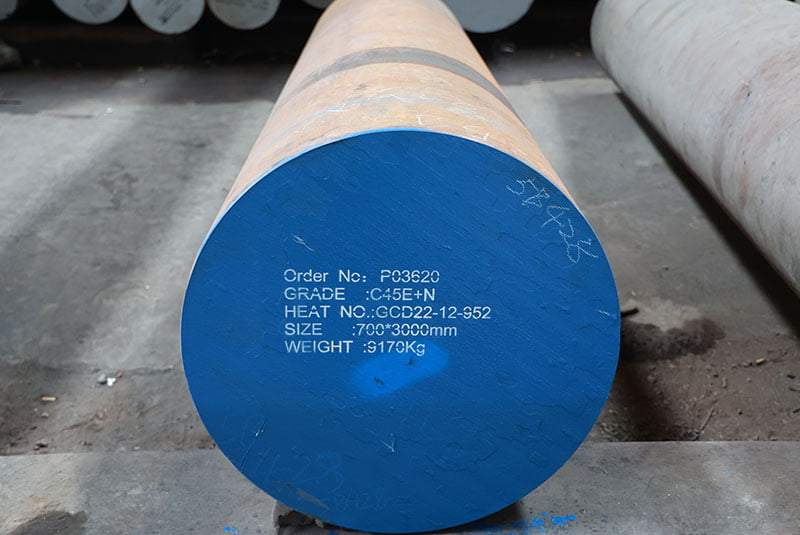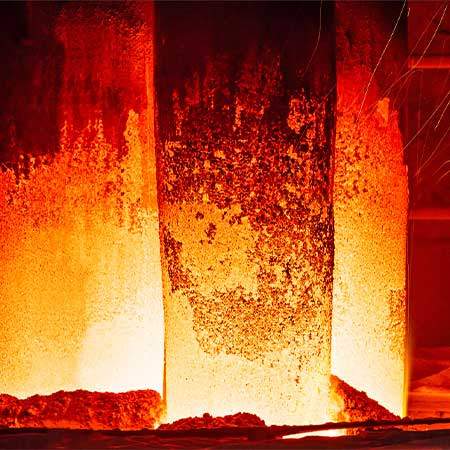Introduction
1045 steel, a medium carbon steel, is widely recognized for its excellent mechanical properties and versatility in various applications. One of the key attributes that makes 1045 steel a popular choice in engineering and industrial fields is its yield strength. Understanding the yield strength of 1045 steel is crucial for selecting the right material for your project, ensuring optimal performance, and maintaining safety standards. In this comprehensive guide, we will delve into the specifics of 1045 steel yield strength, factors that influence it, and its applications across different industries.
What is Yield Strength?

Definition and Importance
Yield strength is the stress at which a material begins to deform plastically. Prior to the yield point, the material will deform elastically, meaning it will return to its original shape when the applied stress is removed. Once the yield point is passed, some amount of permanent deformation will occur, and it will not return to its original shape. Yield strength is a critical parameter for engineers and designers as it defines the maximum stress that can be applied to a material without causing permanent deformation.
Measuring Yield Strength
The yield strength of a material is determined using a tensile test. In this test, a sample is subjected to a controlled tensile load until it deforms. The yield strength is typically identified at the point on the stress-strain curve where the material transitions from elastic deformation to plastic deformation.
Properties of 1045 Steel
Chemical Composition
1045 steel is a medium carbon steel with the following chemical composition:
- Carbon (C): 0.43 – 0.50%
- Manganese (Mn): 0.60 – 0.90%
- Phosphorus (P): 0.040% max
- Sulfur (S): 0.050% max
This composition provides a good balance of strength, hardness, and ductility, making 1045 steel suitable for a variety of applications.
Mechanical Properties
The mechanical properties of 1045 steel are influenced by its chemical composition and heat treatment. Here are the typical properties:
- Tensile Strength: 570 – 700 MPa
- Yield Strength: 300 – 450 MPa
- Elongation: 16 – 22%
- Brinell Hardness: 170 – 210 HB
Factors Affecting 1045 Steel Yield Strength
Heat Treatment
Heat treatment significantly affects the yield strength of 1045 steel. Processes such as annealing, quenching, and tempering can alter the microstructure of the steel, thereby impacting its mechanical properties. For instance, quenching and tempering can increase the yield strength by transforming the microstructure into a martensitic phase, which is harder and stronger.
Alloying Elements
The presence of alloying elements such as manganese plays a crucial role in enhancing the yield strength of 1045 steel. Manganese, in particular, improves hardenability and tensile strength, contributing to a higher yield strength.
Manufacturing Processes
The method of manufacturing, including processes like forging, machining, and cold working, can also affect the yield strength. Cold working, for example, increases the dislocation density in the steel, leading to an increase in yield strength due to strain hardening.
Applications of 1045 Steel Based on Yield Strength
Construction
In the construction industry, 1045 steel is often used in the fabrication of structural components such as beams, columns, and frames. The yield strength of 1045 steel ensures that these structures can withstand significant loads without permanent deformation, maintaining the integrity and safety of the building.
Machinery and Equipment
The high yield strength of 1045 steel makes it ideal for manufacturing machinery parts and equipment that are subjected to high stress and impact, such as gears, shafts, axles, and bolts. These components require materials that can endure heavy loads and resist wear and tear over prolonged use.
Automotive Industry
1045 steel is widely used in the automotive industry for making crankshafts, connecting rods, and other critical engine components. The material’s yield strength ensures that these parts can handle the dynamic loads and stresses encountered during engine operation.
Tooling and Molds
Due to its good machinability and high yield strength, 1045 steel is used in the production of tooling and molds. These applications require materials that can withstand high pressures and repeated use without deforming.
Comparison of 1045 Steel Yield Strength with Other Steels

To understand the relative performance of 1045 steel, it is useful to compare its yield strength with other commonly used steels.
Table: Comparison of Yield Strengths
| Steel Grade | Yield Strength (MPa) | Tensile Strength (MPa) | Applications |
|---|---|---|---|
| 1045 | 300 – 450 | 570 – 700 | Machinery, automotive parts, construction |
| 1018 | 370 | 440 | General purpose, cold-formed parts, machinery parts |
| 4140 | 415 – 835 | 655 – 1,170 | High-stress applications, automotive, oil & gas |
| A36 | 250 | 400 – 550 | Structural components, bridges, buildings |
| D2 | 800 – 900 | 1,700 – 2,100 | Tooling, die casting, cutting tools |
Conclusion
1045 steel is a versatile and widely used medium carbon steel known for its good balance of strength, toughness, and machinability. Its yield strength, ranging between 300 and 450 MPa, makes it suitable for a variety of demanding applications across different industries, including construction, automotive, and machinery manufacturing. Understanding the factors that influence the yield strength of 1045 steel, such as heat treatment, alloying elements, and manufacturing processes, can help in selecting the right material and optimizing its performance for specific applications.
FAQ
What is the typical yield strength of 1045 steel?
The typical yield strength of 1045 steel ranges from 300 to 450 MPa. This range can vary depending on the specific heat treatment and processing conditions applied to the steel.
How does heat treatment affect 1045 steel yield strength?
Heat treatment significantly impacts 1045 steel yield strength. Processes like quenching and tempering can increase the yield strength by altering the steel’s microstructure, typically transforming it into a harder and stronger martensitic phase.
What factors influence 1045 steel yield strength?
Several factors influence 1045 steel yield strength, including heat treatment, alloying elements such as manganese, and manufacturing processes like forging, machining, and cold working. These factors collectively determine the material’s mechanical properties.
How does 1045 steel yield strength compare to other steels?
1045 steel yield strength is moderate compared to other steels. For example, 1018 steel has a lower yield strength, while 4140 and D2 steels have higher yield strengths, making them suitable for more demanding, high-stress applications.
What are common applications of 1045 steel based on its yield strength?
Due to its yield strength, 1045 steel is commonly used in the construction industry for structural components, in machinery and equipment for high-stress parts, in the automotive industry for engine components like crankshafts and connecting rods, and in tooling and molds for high-pressure applications.
Can 1045 steel yield strength be increased?
Yes, 1045 steel yield strength can be increased through heat treatment processes such as quenching and tempering. These processes enhance the steel’s microstructure, increasing its hardness and strength.
What is the impact of manganese on 1045 steel yield strength?
Manganese significantly improves 1045 steel yield strength by enhancing its hardenability and tensile strength. It also increases the steel’s toughness and wear resistance, contributing to overall improved mechanical properties.
How is 1045 steel yield strength measured?
1045 steel yield strength is measured using a tensile test. During this test, a sample is subjected to a controlled tensile load until it deforms. The yield strength is identified at the point on the stress-strain curve where the material transitions from elastic to plastic deformation.
Why is understanding 1045 steel yield strength important for construction?
Understanding 1045 steel yield strength is crucial for construction because it determines the maximum stress the material can withstand without permanent deformation. This knowledge ensures the structural integrity and safety of buildings and other infrastructure.
What role does 1045 steel yield strength play in the automotive industry?
In the automotive industry, 1045 steel yield strength is vital for manufacturing components that endure dynamic loads and stresses, such as crankshafts and connecting rods. Its high yield strength ensures these parts can perform reliably under intense operating conditions.
